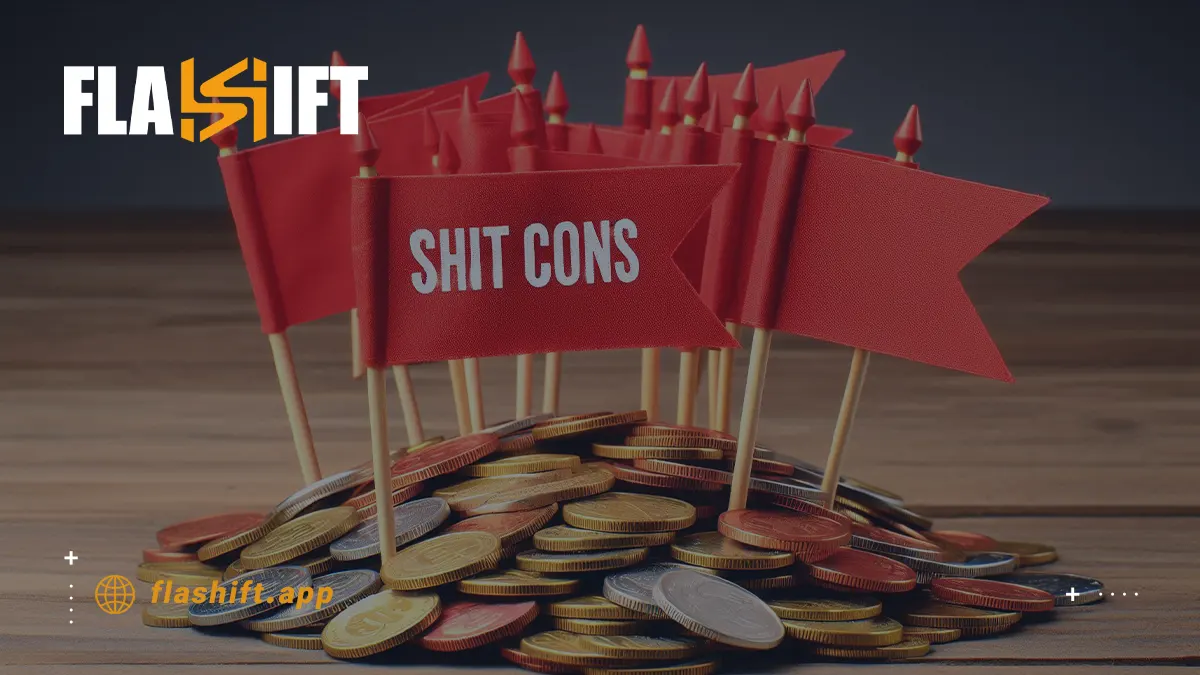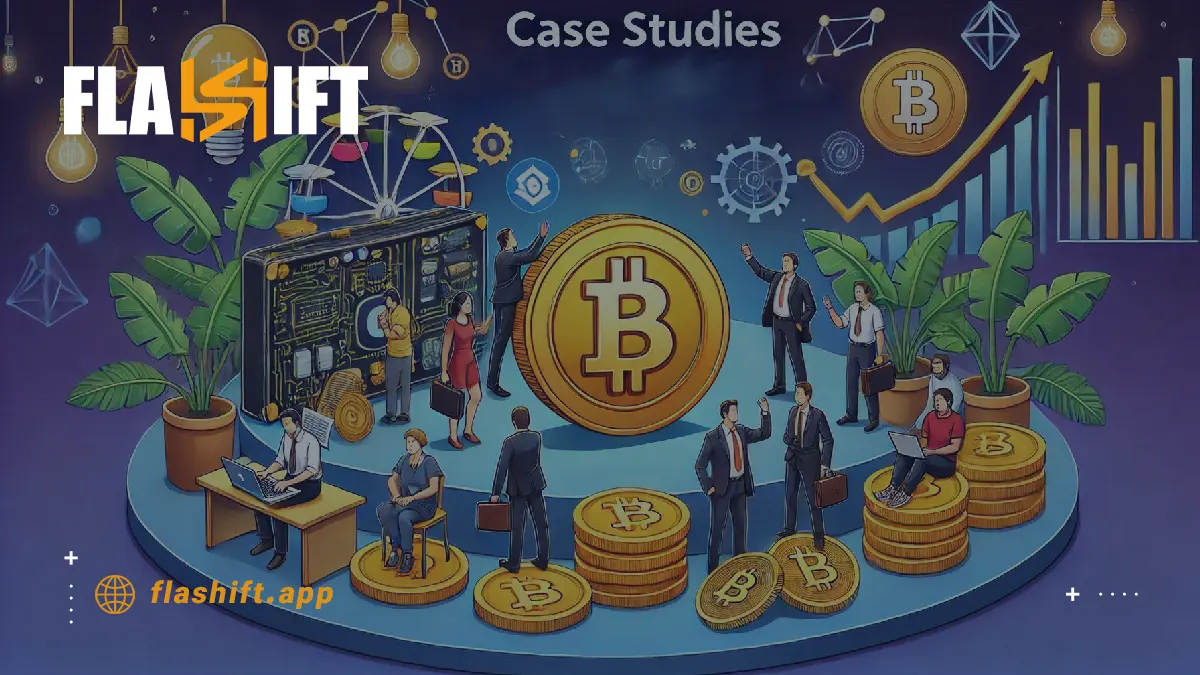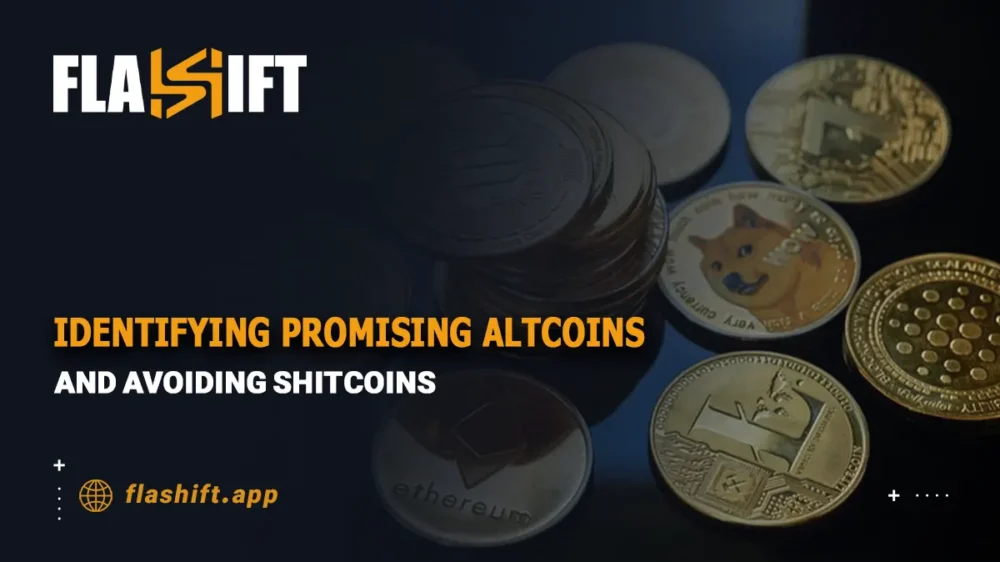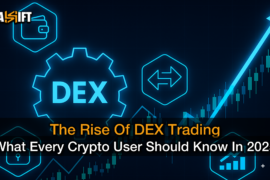Promising Altcoins | The cryptocurrency market offers unparalleled opportunities for investors, but it’s a space fraught with risks, misinformation, and speculation. With thousands of digital currencies available, separating promising altcoins from so-called shitcoins has become a crucial skill for anyone looking to capitalize on this rapidly evolving market. This guide will delve into proven strategies for evaluating altcoins, understanding market trends, and spotting red flags that signal potential pitfalls. Whether you are a seasoned trader or just starting out in crypto, this comprehensive overview will help you understand everything and hopefully avoid investments that could ruin your crypto portfolio.
Introduction: Understanding the Diverse Cryptocurrency Market

The cryptocurrency market has grown exponentially, offering investors a wide array of digital assets. Among these, altcoins, or cryptocurrencies other than Bitcoin, provide unique opportunities for diversification and growth. However, not all altcoins are created equal. Understanding the difference between promising altcoins and shitcoins is vital for successful cryptocurrency investment.
Some promising altcoins have extensive use cases, strong developer teams, a clear roadmap, and an active community. These often solve particular problems innovatively, making them very useful in reality and, hence, a store of value in the long run. Examples include Ethereum for decentralized applications and Chainlink for connecting smart contracts with real-world data.
In contrast, shitcoins lack substantive utility, clear vision, or credible development efforts. Often launched solely to ride the crypto hype, these coins are characterized by pump-and-dump schemes, poor project fundamentals, and negligible innovation. They are a significant risk for investors, making identifying shitcoins a key part of crypto market research.
By mastering the art of analyzing altcoins and then creating sound crypto investment strategies for yourself, you will understand how to find promising altcoins while knowing the red flags that generally come with shitcoins. The best ways to be in this erratic market are to conduct proper research, look at the project’s fundamental analysis, and exercise risk management principles in cryptocurrency.
What Are Altcoins?
Altcoins, the shortened term for “alternative coins,” represent any cryptocurrency other than Bitcoin. Although Bitcoin pioneered decentralized digital currencies, altcoins have opened up new horizons to the crypto ecosystem by presenting various use cases, technological advances, and solutions to challenges that Bitcoin cannot address.
These are very varied in purpose and functionality, making them a necessary focus for anyone looking into cryptocurrency investment. From innovative contract platforms to DeFi tools and even privacy-focused currencies, altcoins serve many niches within the blockchain world.
Types of Promising Altcoins
- Smart Contract Platforms:
-
- Ethereum (ETH): Known for its ability to host decentralized applications (dApps) and smart contracts.
- Cardano (ADA): Focused on scalability and sustainability in blockchain technology.
- DeFi and Financial Tools:
-
- Chainlink (LINK): A decentralized oracle network that connects smart contracts with real-world data.
- Aave (AAVE): A leading DeFi decentralized lending and borrowing protocol.
- Privacy Coins:
-
- Monero (XMR): Prioritizes user privacy and untraceable transactions.
- Zcash (ZEC): Offers selective transparency for transactions.
- Blockchain Infrastructure:
-
- Polkadot (DOT): Enables interoperability between different blockchains.
- Solana (SOL): Focused on high-speed and low-cost transactions.
To exchange Tether (USDTERC20) to Ethereum (ETH) in one second, Flashift is the easiest way.
Emerging Trends Shaping Promising Altcoins
-
Interoperability and Multi-Chain Solutions
As blockchain networks expand, interoperability projects like Polkadot and Cosmos (ATOM) are solving the fragmentation problem by enabling seamless communication between blockchains. These initiatives are critical as cross-chain functionality grows more essential for creating adaptable decentralized ecosystems. -
Web3 and Decentralized Applications
Altcoins tied to Web3 infrastructure are gaining traction, with projects like The Graph (GRT) providing indexing services for blockchain data to power dApps. Similarly, tokens linked to decentralized identity, cloud storage, and decentralized governance are emerging as cornerstones of Web3 functionality. -
AI, Gaming, and the Creator Economy
Innovations in blockchain gaming (e.g., Axie Infinity’s AXS) and creator-focused projects like Audius (AUDIO) have given altcoins a direct stake in entertainment, intellectual property, and creator incentives. As NFTs and AI technologies harness decentralized tools, this trend underscores significant future growth areas.
Distinction Between Promising Altcoins and Others
While many altcoins have demonstrated substantial utility and innovation, others fall into the category of shitcoins. These lack meaningful use cases, have weak or nonexistent development teams, and often emerge purely for speculative gains. Engaging in thorough altcoin analysis and crypto market research is crucial to distinguish promising altcoins from those with little to no potential.
Investors should carefully evaluate the fundamentals of any altcoin, including its technology, team, community engagement, and market performance. By doing so, they can make informed decisions and avoid risky investments.
Evaluate the Problem & Use Case
Every successful altcoin begins by solving a real-world problem, its use case and real-world application are the foundations of long-term viability. A token with no practical purpose is unlikely to gain lasting adoption. Take Chainlink, for instance: it acts as a decentralized oracle network, enabling smart contracts to securely fetch external data—price feeds, weather stats, IoT sensor readings, from reliable sources . This capability unlocks use cases across industries: powering DeFi apps like Aave with accurate price data, automating parametric insurance payouts tied to weather events, and linking IoT devices to blockchain for real-time automation . Without such real-world utility, altcoins struggle to retain attention and value, so always ask: what meaningful problem does this token address?
Characteristics of Promising Altcoins

Identifying promising altcoins is a crucial step for successful cryptocurrency investment. While the crypto market is saturated with options, focusing on specific characteristics can help you separate high-potential assets from speculative or poorly conceived projects. Here are the key features to evaluate when researching altcoins:
1. Strong Development Teams
- Why It Matters: A credible and experienced team is the backbone of any successful altcoin project. Developers with a history of delivering innovative blockchain solutions inspire investor confidence.
- What to Look For:
- Profiles of team members on LinkedIn or GitHub.
- Past involvement in reputable projects.
- Transparent communication channels such as blogs, updates, or social media activity.
- Example: Ethereum’s success can be attributed to its visionary co-founder, Vitalik Buterin, and its dedicated development team.
2. Clear and Innovative Use Cases
- Why It Matters: A coin’s utility and problem-solving potential drive long-term value, and projects that address real-world issues or improve upon existing technology stand out in the crowded crypto space.
- What to Look For:
- A well-defined whitepaper outlining goals, functionality, and technical details.
- Specific applications include DeFi, gaming, supply chain, or data management.
- Example: Chainlink provides decentralized oracles, solving a critical problem for innovative contract applications.
3. Active and Engaged Communities
- Why It Matters: A strong community signals trust, widespread interest, and organic growth. Community support often correlates with a project’s long-term sustainability and market presence.
- What to Look For:
- Engagement on social media platforms like Twitter, Reddit, or Discord.
- Transparent dialogue between the team and users.
- Real users versus bots or paid promotion.
- Example: Cardano boasts an active global community that regularly participates in updates and ecosystem discussions.
4. Solid Technology and Scalability
- Why It Matters: Strong technical foundations and scalability ensure that a project can handle growing demand without compromising efficiency.
- What to Look For:
- Evidence of technical innovation, such as improved transaction speeds or unique consensus mechanisms.
- Compatibility with other blockchains (interoperability).
- Example: Solana’s high-speed transactions and low fees make it a promising altcoin for scalable applications.
5. Transparent Tokenomics and Supply
- Why It Matters: The economic design of an altcoin determines its scarcity, incentives, and long-term value.
- What to Look For:
- A clear breakdown of token allocation (team, investors, community).
- Fair and transparent release schedules to avoid inflationary pressure.
- Example: Bitcoin’s capped supply model ensures scarcity, while many altcoins adopt similarly transparent mechanisms.
How to Identify Promising Altcoins: Best Practices
Step 1:
Accurately identifying promising altcoins involves research, analysis, and strategic thinking. To begin, one should research the fundamentals of that altcoin. The starting point would be the project’s whitepaper, explaining the purpose and technology behind the coin and even providing a roadmap for it. A good whitepaper shows professionalism and transparency; vague or technical papers may signal possible red flags. Also, please look for active communication via official channels such as the website, blogs, or social media; this indicates active development and a commitment to community communication.
Step 2:
Next, could you evaluate the development team and their partnerships? A strong team with a history of successful projects in the blockchain or tech industry adds credibility to an altcoin. Please look for team members with verified profiles on platforms like LinkedIn or GitHub. Equally important are strategic partnerships with established companies or organizations. These alliances can signal that the project is taken seriously within the industry. For instance, an altcoin partnered with a leading blockchain network or financial institution may have stronger prospects than standalone projects.
Step 3:
Finally, I’d like you to look over market and community indicators. A promising altcoin typically has an active community supporting its development and adoption. Monitor platforms like Reddit, Telegram, and Twitter for discussions about the coin. Pay attention to metrics such as trading volume, liquidity, and market cap, which reflect investor confidence and market activity. Tools like CoinGecko or CoinMarketCap can help track these metrics. By combining thorough research, analysis of team credibility, and community insights, investors can make well-informed decisions and avoid falling into the traps of hype-driven projects or shitcoins.
Red Flags: Identifying Shitcoins

What is Shitcoin? Investing in cryptocurrencies comes with inherent risks, and identifying potential shitcoins—low-quality or fraudulent projects—is critical for avoiding significant losses. Below are key red flags to watch for during your crypto market research.
1. Lack of Transparency
One of the most apparent signs of a shitcoin is a lack of clear, accessible information about the project.
- Unverifiable Team: If the team behind the project is anonymous or provides no verifiable credentials, it’s a major red flag. Credible projects usually showcase their team members and their qualifications.
- Vague Whitepaper: A poorly written or overly technical whitepaper that doesn’t clearly explain the coin’s purpose use case, or technology can indicate a lack of genuine effort or expertise.
- No Audit Reports: Established projects undergo third-party audits to verify the security of their code. The absence of such audits raises concerns.
2. Unrealistic Promises
Shitcoins often rely on hype and exaggerated claims to lure investors.
- Guaranteed Returns: Scammers commonly use promises of “risk-free” or “guaranteed” profits. Cryptocurrency markets are volatile, and no legitimate project can assure consistent gains.
- Buzzwords Without Substance: Some projects overload their marketing with trendy terms like “DeFi,” “AI,” or “Web3” without demonstrating how they apply these technologies in a meaningful way.
- Rapid Wealth Schemes: Be cautious of coins marketed as “the next Bitcoin” or those claiming exponential growth in a short period.
3. Poor Community and Market Presence
A weak or inorganic presence in the crypto ecosystem can signal a low-quality project.
- Inactive or Bot-Driven Community: Genuine projects foster engaged communities. Shitcoins often resort to fake followers or bots to create an illusion of popularity.
- Low Liquidity and Trading Volume: Coins with limited trading activity are more challenging to buy or sell and may be prone to price manipulation. Check these metrics on platforms like CoinGecko or CoinMarketCap.
- Pump-and-Dump Schemes: Watch for coins with erratic price spikes followed by steep drops, hallmarks of insider market manipulation.
By staying vigilant for these red flags of shitcoins, investors can make smarter decisions and avoid scams. Prioritizing thorough research, skepticism of unrealistic claims, and a focus on transparency can help safeguard your cryptocurrency investments.
Case Studies: Success Stories and Cautionary Tales
The cryptocurrency market provides numerous examples of promising altcoins that have succeeded due to innovation and solid fundamentals, as well as shitcoins that have failed because of poor design or fraudulent intentions.

Notable Altcoin Successes
- Ethereum (ETH)
Ethereum introduced smart contracts, enabling decentralized applications (dApps) and decentralized finance (DeFi). Its robust ecosystem and continuous development, such as the transition to Ethereum 2.0, have solidified its position as a market leader and a top choice for cryptocurrency investment. - Binance Coin (BNB)
Initially launched as a utility token for reduced fees on Binance, BNB has grown to power the Binance Smart Chain (BSC). Its success is rooted in its precise use case and integration into the operations of one of the largest cryptocurrency exchanges. - Polkadot (DOT)
Polkadot focuses on blockchain interoperability, allowing different networks to communicate seamlessly. This unique approach has made it a key player in the crypto space, attracting developers and projects to its ecosystem.
Examples of Failed Shitcoins
- Bitconnect (BCC)
Marketed as an investment platform offering guaranteed returns, Bitconnect became one of the largest Ponzi schemes in crypto history. Its collapse in 2018 caused significant losses to investors. - Squid Game Token (SQUID)
Leveraging the popularity of the Netflix series, this token soared in price before the developers executed a “rug pull,” disappearing with investors’ funds and leaving them unable to sell. - OneCoin
Promoted as a revolutionary cryptocurrency, OneCoin was never listed on any exchange and lacked blockchain technology. It was exposed as a multi-billion-dollar pyramid scheme.
These examples illustrate the importance of crypto market research and due diligence. Successful altcoins share traits like strong utility, credible teams, and active ecosystems, while shitcoins often lack transparency, overpromise returns, and exhibit fraudulent behaviors. Focusing on these distinctions can guide better cryptocurrency investment decisions.
Due Diligence: Research Strategies for Crypto Investments

Tips on Conducting Thorough Research for Promising Altcoins
Conducting thorough research is essential for identifying promising altcoins and making informed cryptocurrency investment decisions. Here are key strategies to help you evaluate altcoins effectively:
1. Whitepaper Analysis
A well-written whitepaper is the foundation of any legitimate altcoin project. It outlines the coin’s purpose, technology, and long-term goals.
- Key Areas to Review:
- Problem and Solution: Does the project address a real-world problem with a clear, innovative solution?
- Technical Details: Assess the blockchain’s scalability, consensus mechanism, and security features.
- Roadmap: Check the project has a realistic, detailed roadmap with measurable milestones.
- Tokenomics: Consider a transparent token distribution plan that avoids large allocations to founders or early investors.
2. Market Performance Review
Monitoring an altcoin’s market performance can provide insights into its adoption and investor confidence.
- Key Metrics:
- Market Cap and Liquidity: Higher market cap and liquidity often indicate more excellent stability and adoption.
- Trading Volume: Consistent trading volume suggests healthy investor activity.
- Price Volatility: Extreme volatility can indicate speculative or pump-and-dump behavior.
- Listing on Reputable Exchanges: Coins listed on significant exchanges are usually subjected to more scrutiny and offer more liquidity.
3. Community and Developer Engagement
A strong, active community and a committed development team are critical for an altcoin’s long-term success.
- Community: Join forums like Reddit, Telegram, or Discord to see if the community is engaged and supportive.
- Development Activity: Check GitHub to see if developers regularly update the codebase, add features, and resolve issues. A stagnating codebase can indicate a lack of progress or commitment.
Combining these research techniques—analyzing whitepapers, reviewing market performance, and assessing community and developer engagement—you can conduct comprehensive altcoin analysis and make well-informed decisions in the rapidly evolving cryptocurrency market.
Risk Management: Safeguarding Your Investments

Strategies to Mitigate Risks in Cryptocurrency Investments
While cryptocurrency investment can be super rewarding, it also involves many risks due to market volatility and fraud. Implementing effective risk management in cryptocurrency will help you protect your investments and potentially reduce your losses. Essential ways to help you survive in this crypto turbulence:
1. Portfolio Diversification
One of the most effective ways to reduce risk is through portfolio diversification. Instead of putting all your funds into one cryptocurrency, spread your investments across multiple promising altcoins with varying use cases and risk profiles.
- Why It Works: By diversifying, you reduce the impact of a loss from a single asset, as the overall performance of your portfolio is less likely to be influenced by the failure of one coin.
- Best Practices: Invest in a mix of established coins (like Ethereum or Binance Coin) and promising newer projects with strong fundamentals. Balance riskier investments with more stable assets to maintain a well-rounded portfolio.
2. Setting Stop-Loss Orders
A stop-loss order is a tool that automatically sells an asset when its price falls to a predetermined level. This helps you limit losses in case the market moves against your position.
- Why It Works: Stop-loss orders can protect you from substantial losses, especially in a highly volatile market like cryptocurrency.
- Best Practices: Set stop-loss orders at a level you are comfortable with, considering your risk tolerance and the coin’s volatility. Ensure your stop-losses are realistic and not too tight, as they could trigger unnecessarily small price fluctuations.
3. Avoiding Shitcoins and Fraudulent Projects
Avoiding shitcoins in crypto investments is essential to preserving your capital. These projects often lack clear use cases, have weak teams, or are designed to exploit investors through scams.
- Why It Works: Staying away from shitcoins ensures that your investments are in legitimate, high-potential projects that have real-world utility.
- Best Practices: Conduct thorough research on any altcoin before investing, focusing on aspects like the development team, whitepaper, and market presence. Look for red flags like promises of unrealistic returns or lack of transparency, which are common characteristics of fraudulent projects.
By following these best practices for investing in altcoins—diversifying your portfolio, setting stop-loss orders, and carefully evaluating altcoins before investing—you can effectively manage risk and make more informed, strategic decisions in the unpredictable cryptocurrency market.
Conclusion: Making Informed Decisions in the Crypto Market
The cryptocurrency market offers vast opportunities, with promising altcoins presenting exciting investment potential; at the same time, it contains excellent risks to result in significant losses, mainly brought on by shitcoins. Through profound research in cryptocurrency investment, resting on solid grounds of fundamentals, portfolio diversification, and risk management, among others, are key factors toward success while trying to avoid common mistakes.
It is essential to be informed and vigilant because the crypto market is fast-moving and constantly changing. Always consider every investment, whether established coins or newer, up-and-coming altcoins. The key to success in the crypto space is a balance between optimism and caution and investing in promising projects while avoiding speculative or fraudulent schemes.
With this in mind, following such guidance and staying true to being informed in decision-making are the ways to go ahead confidently through the crypto maze for maximum success.
FAQ
- What is an altcoin?
An altcoin is any cryptocurrency other than Bitcoin designed to offer alternative features or improvements over Bitcoin, such as faster transactions or enhanced privacy. You should also know how to secure crypto transactions. - How are altcoins different from Bitcoin?
Altcoins often have unique use cases or technology, like Ethereum’s smart contracts or Litecoin’s faster transaction speeds, setting them apart from Bitcoin’s primary function as a store of value. - What makes an altcoin promising?
A promising altcoin has a clear use case, a solid development team, active community support, and a well-structured roadmap for future growth. - How can I identify a good altcoin to invest in?
Look for transparency, a credible team, and a defined problem-solving approach. Assess its market adoption and performance metrics to gauge long-term potential. - What are the red flags of shitcoins?
Signs of a shitcoin include unrealistic promises, lack of transparency, anonymous or unqualified teams, and little to no real-world application. - How can I avoid shitcoins?
Conduct thorough research, check for a credible development team, and avoid projects with vague goals, unrealistic returns, or suspicious market behavior. - What are examples of successful altcoins?
Ethereum and Binance Coin (BNB) are successful due to their solid technology, widespread adoption, and continuous innovation. - Can you give examples of failed shitcoins?
Bitconnect and OneCoin failed due to Ponzi schemes and fraudulent projects, leading to major investor losses. - How do I do research before investing in crypto?
Please review the project’s whitepaper, check the development team’s background, and assess market data such as trading volume and liquidity. - What should I focus on during altcoin analysis?
To determine an altcoin’s investment potential, focus on its use case, technology, team, market performance, and transparency. - How can I reduce risk in cryptocurrency investing?
To mitigate potential losses, diversify your portfolio, set stop-loss orders, and only invest money you can afford to lose. - What is a stop-loss order, and how does it help?
A stop-loss order automatically sells an asset when its price falls to a predetermined level, helping limit potential losses in volatile markets.







